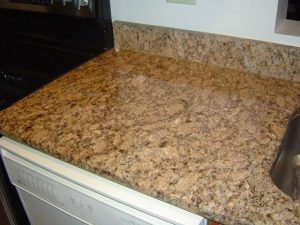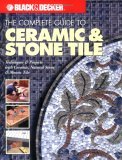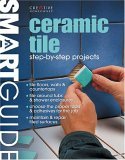Common Questions and Answers to Using Stone in Your Home
By Mark J. Donovan
|
|
Stone is a great material to use in your home. There are many different types of natural stone that are used in new home construction today. Incorporating stone into a home provides elegance and old world charm to a house with its wonderful textures and natural colors. Stone is timeless and will never go out of style. Natural stone is used for flooring, kitchen countertops, and fireplaces just to name a few applications. If you have new home construction plans, or are simply looking to remodel a space within your home, consider using stone.
What type of Stone Finishes are Available? Choosing the right natural stone for your home application can be challenging simply due to the fact that there are so many choices. |
To begin with natural stone is available in a number of different finishes.
The list of stone finishes include polished stone, hone stone, antique tumbled stone, brushed stone, flamed stone, and cobbled or distressed stone. Polished stone has a high gloss appearance, whereas honed stone has an unpolished surface. Tumbled stone has an even less polished surface and its edges are rounded. Antique tumbled stone has a moderately smooth surface and slightly tumbled edges to achieve a rustic look. Cobbled and distressed stone have a very old look due to being heavily tumbled. Flamed stone has a rough textured and torched surface that is acid washed to achieve a smooth textured surface.
What are Common Stone Types Used in the Home?
In regards to the particular type of stone to use there are many to choose from. Common stone used in houses today included granite, travertine, slate, marble, and limestone. Most of these stones can be purchased in a variety of forms including slab, dimensional tile form, and in various piece sizes and thicknesses.
| Granite stone is quarried from many parts of the world. Consequently granite stone comes in a plethora of colors and patterns. It is available in large slabs or tile form. Prices can vary widely due to the rarity of the stone color and pattern, and the thickness of it. It can have both rough and smooth finishes depending upon the polishing done on it. Honed and flamed surfaces are very common with granite stone.
Limestone is another popular choice with homeowners as it can be used virtually in any home application. |
 |
Limestone generally is available in softer tone colors. It can also have gentle swirls in it or a speckled grain appearance. Limestone can also be purchased in many different finishes. Like granite, it too can be purchased in slab or tile form.
Slate stone has been used for centuries for roofs, flooring, and walkways. Slate has a rough textured surface. It can be purchased in dimensional tiles or in a wide variety of shapes and sizes. It can even be purchased in slab form. It is ideal for bathroom applications, or wherever there is water such as in showers, spas, hot tubs, and pool areas.
| Marble stone is also commonly found in homes. Over the centuries it has been used for flooring and around fireplace hearths. The early Romans and Greeks used marble extensively in their buildings. It is available in a wide variety of shapes, sizes and colors. It also stains, scratches, and etches easily and thus is available in an infinite amount of shades and textures. It is also known for its unique veining. It is also available in a number of finishes. Smooth marble finishes can be extremely slippery when wet so it is wise not to use it in wet areas.
Travertine stone is a form of marble that has a very textured appearance. It is effectively a version of marble with holes in it. Thus it is very porous. |
 |
Though porous, it can still be used in wet applications or where staining is possible as long as the travertine stone is grouted or sealed. Also, you can buy travertine with the holes pre-filled, however often the epoxy used gives a slightly unnatural look to the stone. In my opinion it is better to simply fill the holes with the color grout you are using on the stone project.
Is Stone Susceptible to Staining?
Stone also has inherent etching, pitting and cracking in it to add to its natural charm. The only issue with these stone features is that the stone can be susceptible to staining if a liquid is spilled onto them. Using sealers over stone can help to mitigate staining and allow you time to wipe up the spill before the liquid can sink in and cause permanent staining. If staining does occur, it’s best to chock it up to part of the natural aging of the stone.
How Much Stone to Buy?
When buying natural stone, keep in mind that it is quarried and not manufactured. Consequently it is difficult to find additional stone of the same exact color, pattern, thickness and texture, even from the same store. As a result, it is best to buy more than enough of the exact natural stone for the particular project you’re working on. Chances are that if you run short in your stone project, you’ll be unlikely to find more of the exact type that you are looking for even at the same store.
I typically buy about 10% more than what the room measurements indicate. Buying extra helps to ensure I have enough to complete the job. With any stone or tile project there is always breakage and cutting that eats into your material requirements. Also, I like to have a few extra pieces that I can store away for a rainy day, such as in the event of a damaged stone.
Is the Installation of Stone more Expensive than Ceramic Tile?
Stone is installed very similar to ceramic tile as the same installation materials and tools are used. The only real difference is in the thickness of the stone relative to ceramic tile. The extra weight of the stone consequently requires a bit more effort and time to layout, thus adding slightly to the installation cost.
How thick should the Grout Lines be?
I typically like to see grout lines in tumbled stone applications between 1/8th and 1/4th inch thick, depending upon the size of the actual pieces of stone. For honed stone you can nearly butt the ends together to effectively have zero grout line widths.
Can you Mix Stone Types in an Installation?
Definitely. Many homeowners mix stone types to achieve unique patterns and appearances. Also, in many cases people mix stone with ceramic tiles or glass.
For information on installing a shower pan membrane liner for a ceramic tile shower, see the Shower Pan Membrane Liner Installation Ebook from HomeAdditionPlus.com. The Shower Pan Membrane Liner EBook will quickly teach you the step-by-step process for installing the shower pan membrane liner correctly. It includes instructions on framing the shower stall, pouring the pre-slope and shower base mortar, and installing the shower pan membrane liner.
See HomeAdditionPlus.com’s Ceramic Tile Calculator
See my “How to Tile a Custom Ceramic Tile Shower” Ebook to learn how to tile your own shower: For a detailed set of instructions on tiling a shower floor and walls, including pictures for every step in the process, see my “How to Tile Custom Ceramic Tile Shower Ebook”.
Related Information
Additional Ceramic Tile Resources from Amazon.com
 |
 |
 |
Get Free Kitchen Remodeling Price Quotes with No Obligation!
Fill out our 3-5 minute quick and easy form, and receive a free price quote on a kitchen remodeling project from one of our pre-screened and licensed kitchen remodeling contractors. This process is free and there is no obligation to continue once you receive your kitchen remodel price estimate.
